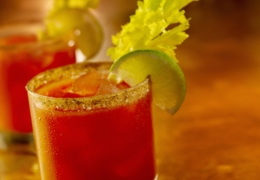Historic restaurant roundup in Calgary
Calgary’s first inhabitants settled here more than 11,000 years ago, but the first European settlers didn’t arrive until 1873, two years before it became a North-West Mounted Police post. Over the decades, Calgary’s historic buildings have faced fires, floods and demolition, but we’ve managed to maintain some gems – some of which house top restaurants. Here is a handful of eateries that dwell in heritage digs.
Bow Valley Ranche Restaurant
-
Phone Number
- 403-476-1310Primary
-
Directions
- Menu
There’s no restaurant more historic than the original ranch house where in 1919 the Big Four – wealthy ranchers Patrick Burns, George Lane, A.E. Cross and Archibald McLean – drew up plans to make the Calgary Stampede an annual event. Tucked into a scenic corner of Fish Creek Provincial Park, the Bow Valley Ranche serves upscale, locally produced, ranch-worthy fare such as Angus beef, venison, elk and lamb, in the stately house’s restored surroundings. Its excellent verandah offers al fresco dining in warm weather, and there's even a resident ghost.
The Restaurant at Lougheed House
-
Phone Number
- 403-410-9288Primary
-
Directions
- Menu
A veritable mini-sandstone castle in Beltline, Lougheed House is a gem of an historic spot with beautiful surrounding grounds. The Restaurant at Lougheed House is a study in Victorian architecture, all polished wood panels and mouldings, carved stone features and stained-glass windows. Built by Senator James Lougheed for his family, the eatery at this national historic site is open Wednesday to Friday for lunch, and weekends for brunch, serving hearty sandwiches, soups and salads.
Workshop Kitchen + Culture
-
Phone Number
- 403-266-7062Primary
-
Directions
- Menu
Launched in 2014 in the former Grand Theatre (now called Theatre Junction Grand), Workshop features a warm, rustic interior featuring exposed brick, long tables, metal chandeliers and plaid banquettes. A large contemporary menu featuring dishes such as adobo seafood stew and pineapple porkbelly kabobs make it a belly-rubbing choice for dining. Also try its sweet and savoury house-made soda drinks.
Rouge
-
Phone Number
- 403-531-2767Primary
-
Directions
- Menu
The charming, gingerbread-accented former A.E. Cross House by the Bow River in historic Inglewood is home to the top-reviewed Rouge restaurant. Several dining areas offer an elegant atmosphere amidst its richly hued walls. Rouge creates culinary delights using local meat and produce. The brown-butter poached halibut is heaven, and the heirloom tomato salad a tart thing of beauty with its savoury ramp vinaigrette.
The Rimrock
-
Phone Number
- 403-260-1219Primary
-
Directions
- Menu
Built to capitalize on the influx of tourists passing through after the construction of the Canadian Pacific Railway snaked westward, The Palliser was the first luxury hotel in Calgary. That opulence and grandeur stands today, with its marble columns and gold-leaf ceilings. Issued the first liquor license post-prohibition in 1924, the hotel has long hosted elegant imbibers and discerning diners. The Rimrock’s menu is inspired by the hotel cuisine of the 1920s, featuring rich, lux dishes.
The Nash Restaurant & Off Cut Bar
-
Phone Number
- 403-984-3365Primary
-
Directions
- Menu
The National Hotel originally housed itinerant railroad workers who needed a simple bed and a place to put back a pint or two. From the no-frills – then notably neglected – bones of the former hotel, has risen a beautifully restored building, now with a great eatery at its base. Chef Michael Noble launched The Nash and Off Cut Bar in 2014, after converting the large main floor into a streamlined, whitewashed contemporary dining room with a relaxed atmosphere and a menu loaded with upscale comfort food.
Murrieta's Inc
-
Reserve
-
Phone Number
- 403-269-7707Primary
-
Directions
- Menu
Situated in what was once the Alberta Hotel building, this stately sandstone property once featured the longest bar in Western Canada, and has been renovated numerous times to accommodate local businesses since prohibition closed the hotel in 1916. Murrieta’s is loaded with heritage personality, with its sandstone-and-brick walls, vaulted ceilings and tiled staircase. The menu features West Coast-inspired cuisine and a fabulous wine list.
Flames Central
-
Phone Number
- 403-935-2637Primary
-
Directions
Oh, how my heart broke when the Palace Theatre shut its doors in 1990. I’d seen countless movies (Raiders of the Lost Ark a half dozen times) in its palatial, Neoclassical splendour. Designed by renowned American architect Howard Crane, the Palace became a nightclub in 1998, then Flames Central in 2007 in a partnership between the Calgary Flames franchise and Concorde restaurant group. The multi-level venue features live entertainment and, of course, televised Flames games on more than 100 screens. Food is an accessible mix of steaks, pastas and burgers.
Charbar Restaurant Inc
-
Phone Number
- 403-452-3115Primary
-
Directions
The Simmons Building – a former mattress factory whose interior and lettered facade has been refreshed and refurbished – has been reborn as part of the ongoing East Village community revitalization. The chefs behind the wildly popular CHARCUT Roast House nabbed a prime space in the Simmons, and built a rooftop patio with a primo river view. The menu features food with an Argentinian bent, with a raw oyster bar, tableside service, meat dishes fired on an Argentine wood-fired grill and a decent selection of vegetarian options.
Teatro
-
Phone Number
- 403-290-1012Primary
-
Directions
- Menu
The former Dominion Bank Building on historic Stephen Avenue Walk has been home to Teatro for more than 20 years. Its grand, carved stone columns and ceilings tell the story of what it must have been like to be a bank customer in days of yore – i.e.: valued and respected. And Teatro serves its clientele with just that kind of attentive flair. Its contemporary Mediterranean cuisine features local, imported and organic ingredients as well as fine international cheeses. The lobster risotto is to-die-for decadence.




 My Website
My Website

